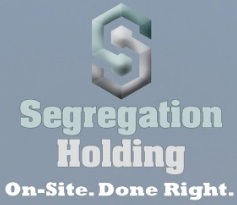Don’t send the IRS any money yet! There are three letters that scare everybody…IRS.
But you don’t have to send the IRS any money if you will use your building as the tool the IRS allows for. The manner prescribed by the Internal Revenue Code can get you a refund…depending on your personal tax situation of course.
The IRS’ recommended method of depreciation all commercial property should apply is MACRS (Modified Accelerated Cost Recovery System). You can verify this information yourself by going to the IRS website at Depreciation Overview Chapter 6.3. If you are currently using the 39-year straight-line method then you are NOT in IRS tax compliance.
Additionally, you are leaving considerable money on the table, or, as the truth is, IN your building. When you purchased, constructed or improved your building your CPA took your final bills or closing statement and “booked in” your building at the total price paid, excluding land since it’s not depreciable, to set up your Fixed Asset Schedule (aka, depreciation schedule). Since your CPA is not a construction professional and is not  trained to determine how components of a building function as they do, he or she is unable to “book” in those assets according to their correct asset life…therefore, the entire asset, all building components (foundation, roof, HVAC, walls, carpeting, lighting, cabinetry, specialty plumbing, dedicated electrical, landscaping, sidewalks, signage, etc.) are set up on this “straight-line” method. Many of the aforementioned components qualify to be depreciated over shorter lives, 5-, 7- and 15-years. Doing so not only adheres to the Internal Revenue Code (which they prefer you do), but it also accelerates depreciation on these assets which correspondingly reduces your income tax burden.
trained to determine how components of a building function as they do, he or she is unable to “book” in those assets according to their correct asset life…therefore, the entire asset, all building components (foundation, roof, HVAC, walls, carpeting, lighting, cabinetry, specialty plumbing, dedicated electrical, landscaping, sidewalks, signage, etc.) are set up on this “straight-line” method. Many of the aforementioned components qualify to be depreciated over shorter lives, 5-, 7- and 15-years. Doing so not only adheres to the Internal Revenue Code (which they prefer you do), but it also accelerates depreciation on these assets which correspondingly reduces your income tax burden.
If you purchased, constructed or completed any improvements to your building in the last year, applying MACRS will allow for a substantial reduction in income taxes owed. If you have owned your building over one year, then you have an income tax credit coming; or, if you choose, a refund. In order to get this refund you have to identify all the building components that qualify for accelerated depreciation and the method used for doing so is called cost segregation. When Hospital Corporation of America sued the IRS and won their case, the precedent was set for component depreciation and cost segregation.
When Hospital Corporation of America sued the IRS and won their case, the precedent was set for component depreciation and cost segregation.
Cost segregation is the process used to identify those components, mentioned above, that qualify for accelerated depreciation. Typically about 20% to 40% of a building’s components qualify for reallocation to those shorter periods of 5, 7 and 15 years. Some will qualify for more, some less. So, for each dollar reallocated by cost segregation from 39-year property to 5-year property, the average benefit equals about 20¢-25¢ in net present value.
So, what does this translate to in real dollars and cents for today? For every $100,000 invested in your building you can get $5,000 in income tax credit or refund. Got $500k in your building, get a $25,000 tax refund!
If you’re about to write a check to the IRS…think twice about it. It’s probable you could be getting a refund instead! Which do you want to do…write a check or cash one?
Contributed by Jeffrey M. Hobbs, Director


